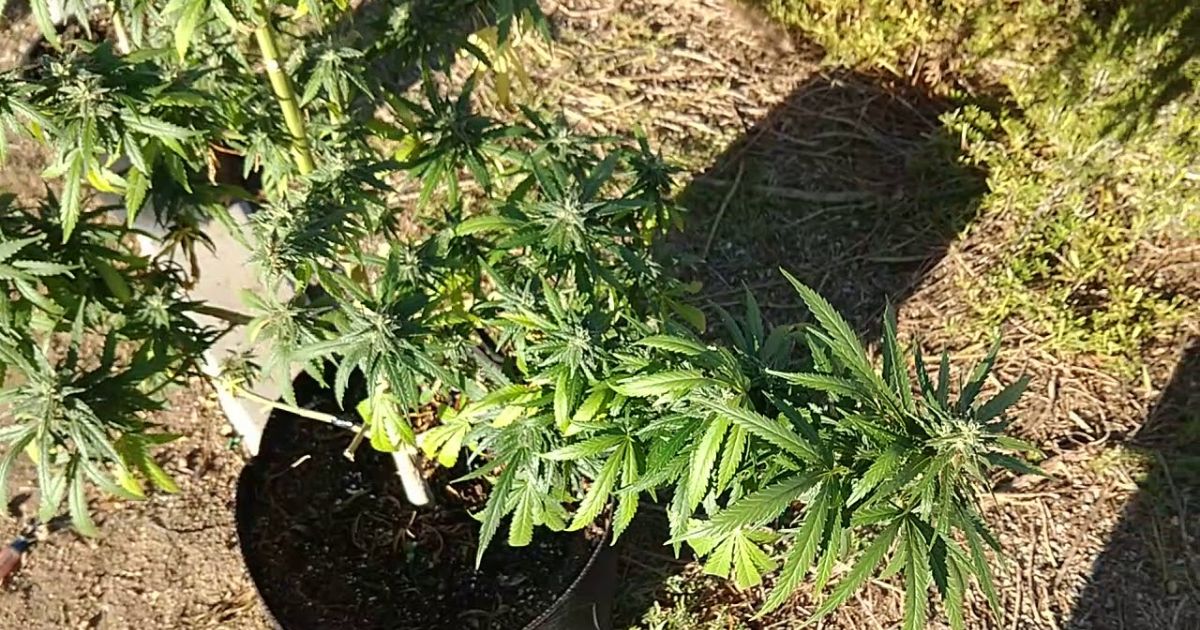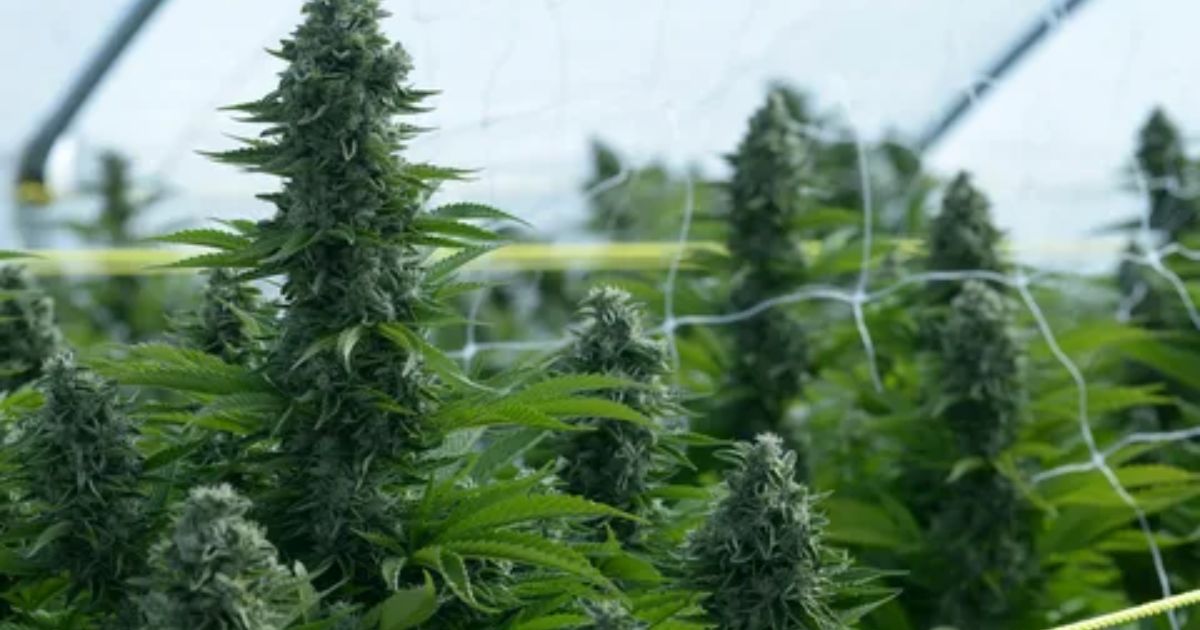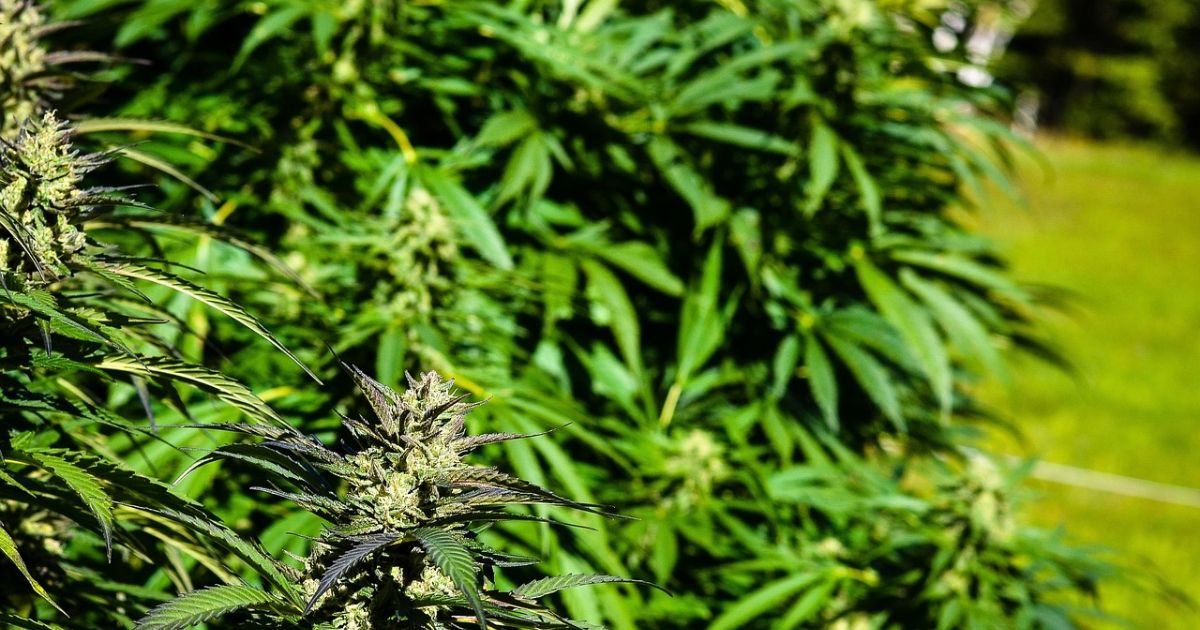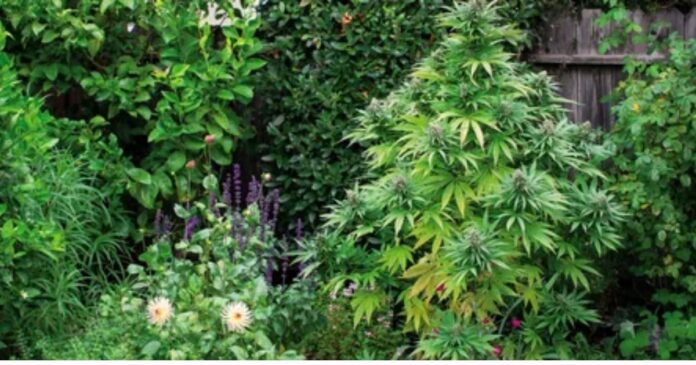One of the most fulfilling experiences for people is growing cannabis outdoors. Growers, offering bigger yields, more decadent flavors, and the satisfaction of working in harmony with nature. But there’s one critical factor that determines whether your outdoor grow will thrive or struggletiming.Planting too early can leave your young cannabis plants vulnerable to frost, storms, or cold nights. Planting too late can shorten their growing season, leading to smaller plants and disappointing harvests. A great growing weed outdoors depends on understanding when to begin.
In this guide, we’ll break down everything you need to know about the best time to start growing weed outdoors from understanding the cannabis life cycle, to factoring in your local climate, to choosing the right strains for your region. Whether you’re a beginner or a seasoned grower, this guide will help you kick off your grow at the perfect moment for a healthy, bountiful harvest.
Understanding the Cannabis Growth Cycle

To figure out the best time to grow cannabis outdoors, you first need to understand how the plant grows. Cannabis has a life cycle made up of several stages, and each one depends on sunlight, temperature, and care to thrive.
Germination (3–10 Days)
This is the starting point—when a cannabis seed cracks open and sprouts its first tiny taproot. Germination usually happens indoors using moist paper towels, seed-starting soil, or starter cubes. At this Stage, outdoor grown weed the seedling is fragile and needs a stable, warm environment before facing the outdoors.
Seedling Stage (2–3 Weeks)
Once the first leaves (cotyledons) appear, your plant enters the seedling Stage. It develops its first “true leaves” with the classic cannabis shape. Common Mistakes That Stop Buds from Flowering The seedling needs gentle sunlight or grow lights, moderate humidity, and careful watering to avoid over-saturation.
Vegetative Stage (4–8+ Weeks)
This is the plant’s “growth spurt” phase. The more sunlight and nutrients it gets, the bigger and bushier it becomes. Outdoors, cannabis thrives in long, sunny summer days. This Stage is when you train your plants, build strong stems, and prepare for flowering.
Flowering Stage (6–12 Weeks)
When days get shorter (usually late summer to fall), cannabis naturally shifts into flowering. This is when buds form and swell—the moment every grower waits for. Flowering time depends on the strain: some finish in as little as six weeks, while others need up to twelve.
Why does this matter for timing?
Outdoor cannabis needs warm, frost-free months for the vegetative Stage and enough time to flower before cold weather sets in. outdoor weed cultivation Understanding these stages helps growers know precisely when to plant outdoors for the healthiest, most productive plants.
Factors That Determine the Best Planting Time
When it comes to growing cannabis outdoor pot seeds, there’s no single “perfect” date for every grower around the world. Instead, the best planting time depends on a mix of environmental factors, including climate, daylight, and local conditions. Understanding these variables will help you plant at the right moment for vigorous, healthy plants and an abundant harvest.
Climate & Region
Your geographic location is the most significant factor in deciding when to start growing outdoors.
- Cold climates (northern U.S., Canada, northern Europe): Growers often wait until late spring to plant outside—after the last frost—to protect seedlings from cold damage.
- Mild or Mediterranean climates (California, Spain, southern France): outdoor bud planting can start earlier, often in March or April, Cannabis Flowering Stages because frost risk is low and sunny days are plentiful.
- Tropical climates (parts of South America, Southeast Asia): With consistent warmth year-round, you can often growing marijuana outdoors multiple crops, but heavy Rain and humidity must be managed.
Daylight Hours
Cannabis is a photoperiod plant, meaning its growth and flowering are triggered by changes in daylight.
- During long summer days, plants stay in the vegetative Stage, growing taller and bushier.
- As days shorten toward late summer and fall, Royal Queen Seeds: plants naturally enter the flowering Stage.
Last Frost Date
Frost is one of the biggest dangers for young cannabis plants. A single cold night can kill or stunt seedlings.
- Check your local “last frost date”—the average date when frost risk ends in your area.
- Planting after this date ensures your young cannabis plants won’t be shocked by sudden freezes.
Local Weather Patterns
Even if frost is no longer a threat, early spring can still bring unpredictable weather—storms, heavy rains, or cold snaps.
- Watch weather forecasts before planting.
- A few extra weeks of patience can save your plants from damage.
When Should You Start Seeds Indoors?

Starting cannabis seeds indoors is one of the smartest moves a grower can make. It gives your plants a head start before they face the unpredictability of outdoor conditions. But timing is everythingoutdoor weed growing you don’t want seedlings sitting inside for too long, nor do you want to transplant them before they’re ready.growing mj outdoors
Why Start Indoors?
- Protection: Young cannabis seedlings are delicate and easily harmed by frost, pests, or heavy Rain.
- Faster Growth: Indoors, you can control light, temperature, and humidity, allowing the seedlings to thrive.
- Earlier Harvest: Starting indoors means your plants will be stronger and bigger by the time they go outside.
When to Start?
- Most growers start seeds 2–4 weeks before the last expected frost date in their area.
- This gives seedlings enough time to sprout, develop strong roots, How to Grow Your Own Chocolope Strain Cannabis and grow their first sets of leaves without outgrowing their containers.
When to Transplant Outdoors
- Transplant your cannabis seedlings when:
- Frost danger has passed.
- The weather is consistently mild (ideally 60–75°F / 15–24°C).
- Seedlings are 6–8 inches tall with several sets of true leaves.
Choosing the Right Strain
I select strains based on my region’s climate and growing season length. Indica strains, like Northern Lights or Purple Kush, mature faster (8-10 weeks of flowering), suiting shorter seasons in cooler climates. Sativa strains, like Amnesia Haze, need longer (10-12 weeks) to thrive in warm, sunny regions. abhayarishta uses in marathi Hybrids offer flexibility, balancing growth speed and yield.
I also consider autoflowering strains, which don’t rely on light cycles and flower in 6-8 weeks. I plant these in early summer (June) for a quick harvest by August, ideal for regions with short growing seasons or for multiple harvests. Strains like Auto Blueberry work well for beginners.
Preparing for Planting
I prepare thoroughly to ensure a successful growth:
- Site Selection: I chose a sunny spot with 6-8 hours of direct sunlight, good drainage, and protection from strong winds. I avoid areas prone to flooding or heavy shade.
- Soil Quality: I test soil pH (aiming for 6.0-7.0) and enrich it with organic matter like compost or worm castings. To avoid root rot, I make sure there is adequate drainage.
- Seeds or Clones: I source high-quality seeds or clones from reputable breeders. I germinate seeds indoors 2-4. To avoid root rot, platenza syrup uses in hindi I make sure there is adequate drainage.
- Pest and Weather Protection: I plan for pests (like aphids) and weather risks (like early frost). I use organic pest controls and row covers for young plants.
Month-by-Month Guide (Northern Hemisphere)
I outline a general timeline for planting and growing outdoors:
- March-April (Pre-Planting): I germinate seeds indoors and prepare my grow site. I check the soil, gather nutrients, and monitor weather forecasts.
- May (Planting): I transplant seedlings outdoors after the last frost. I water regularly and start a nutrient regimen high in nitrogen for vegetative growth.
- June-July (Vegetative Stage): I watch plants thrive in long daylight hours. I prune for airflow, stake tall plants, and monitor for pests.
- August (Flowering Begins): As days shorten, flowering kicks in. I switch nutrients to phosphorus and potassium to support bud growth.
- September-October (Harvest): I check trichomes with a magnifying glass, harvesting when they’re milky with some amber. I dry and cure buds carefully.
For the Southern Hemisphere, I shift this timeline six months (e.g., planting in September-October).
Challenges and Solutions
I anticipate challenges that can disrupt timing:
- Early Frosts: I use frost cloths or move plants to a greenhouse if frost threatens before harvest.
- Excess Rain: I ensure good drainage and use tarps to shield buds from mold during wet seasons.
- Heatwaves: I provide shade cloth and extra water in hot climates to prevent stress.
- Pests and Diseases: I inspect plants weekly, using neem oil or companion planting (e.g., marigolds) to deter pests.
Legal Considerations
I check local laws before growing. In places like California, Colorado, or Canada, I grow within legal limits (e.g., 6 plants per household in California). I secure permits if required and keep plants out of public view to comply with regulations. In areas where cannabis is illegal, outdoor weed plants I avoid growing to steer clear of legal trouble.
Benefits of Outdoor Growing
I embrace the advantages of outdoor cultivation. Sunlight is free and powerful, producing larger plants and higher yields than indoor setups. I save on electricity and equipment costs, and the natural soil enhances terpene profiles, giving buds rich, earthy flavors. I also feel a deeper connection to the environment,planting cannabis outside watching my plants thrive under open skies.
Tips for Maximizing Yields
I share strategies to boost growing pot outdoors success:
- Train Plants: I use low-stress training (LST) to spread branches, increasing light exposure and bud sites.
- Monitor Light Cycles: I track daylight hours to predict flowering and avoid light pollution, which can delay bud production.
- Water Wisely: I water deeply but infrequently, letting soil dry slightly between sessions to encourage strong roots.
- Harvest in Stages: I trim upper buds first if they mature faster, letting lower buds develop longer.
Tips for Outdoor Cannabis Success
Growing cannabis outdoors can produce massive, flavorful harvests, but success depends on preparation and care. First, choose the right spot. Your plants need a minimum of 6 to 8 hours of direct sunlight, soil that drains properly, and some seclusion, as well as privacy to stay safe from prying eyes. Healthy soil is the foundation of a great grow, so enrich it with compost, worm castings, or organic nutrients to create a loose, airy base for strong roots. Water consistently, but wisely; cannabis likes deep watering that soaks the root zone, but overwatering can suffocate roots and invite disease. Outdoor plants also need protection from pests like aphids, caterpillars, and spider mites, so keep an eye out and use organic solutions like neem oil or insecticidal soap when needed.

If wildlife is an issue, simple fencing or mesh can keep deer, rabbits, and pets at bay. Feeding your plants properly is just as critical as focusing on nitrogen-rich nutrients in the vegetative Stage, then switching to phosphorus and potassium for healthy flowering. Light training and pruning techniques can shape bushier plants with more bud sites and better airflow, reducing the risk of mold. Finally, think ahead to harvest by tracking your strain’s timeline and checking trichomes for ripeness in the fall. By combining the correct location, soil prep, feeding, and pest prevention, your outdoor grow can thrive and reward you with abundant, top-quality buds.
Common Mistakes to Avoid
Growing cannabis outdoors can be rewarding, but even minor errors can lead to weak plants, reduced yields, or even a failed harvest. One of the biggest mistakes is planting too early; young seedlings exposed to late frosts or cold nights can stunt or die before they even get started. On the other hand, planting too late means your plants won’t have enough time to veg and bulk up before flowering season, resulting in smaller, underwhelming buds. Another common misstep is ignoring your local climate. Cannabis strains aren’t one-size-fits-all. Tips for Growing the Popular Slurricane Strain at Home Trying to grow a long-flowering sativa in a short northern summer often ends in disappointment.
Poor soil preparation is another trap. Using low-quality or compacted soil can choke roots and prevent nutrient absorption, while skipping proper drainage risks waterlogging and root rot. Many beginners also overwater or overfeed their plants, thinking more is better, which can cause stress and burn them.Finally, some growers neglect pest and mold prevention until it’s too late. Outdoor cannabis is vulnerable to insects, wildlife, and humidity issues that must be monitored from day one.By avoiding these common pitfalls, you’ll give your cannabis the best chance to thrive and deliver a healthy, bountiful harvest.
Conclusion
Growing cannabis outdoors is one of the most natural and rewarding ways to cultivate the plant, but success starts with timing, planning, and preparation. Understanding the cannabis growth cycle, choosing the right strains for your climate, and planting at the correct moment can mean the difference between a modest harvest and an abundant one. Factors like frost dates, daylight hours, and regional weather patterns greatly influence the timing of planting and the growth of your plants. By starting seeds indoors, giving them a healthy head start, and then transitioning them weed plants outside once conditions are ideal, you can set your garden up for success from day one.
Pair that with nutrient-rich soil, consistent care, and innovative pest management, and you’ll be rewarded with vigorous, vibrant plants and top-quality buds come harvest time.Outdoor cannabis growing isn’t just about producing flower; it’s about connecting with the seasons, the soil, and the sun. You can experience the satisfaction if you have the correct information and pay attention to details. Growing your own cannabis in harmony with nature, all while reaping the rewards of a healthy, bountiful harvest.
FAQ
When is the absolute best time to plant weed outdoors?
The ideal time depends on your location. Generally, you should plant after the last frost date in spring, when nights stay above 50°F (10°C) and days are long and sunny.
Can I plant cannabis in the winter?
Not outdoors. Cold temperatures, frost, and short daylight hours will stunt or kill your plants. Winter growing is only possible indoors with controlled conditions.
How early is too early to start seeds?
Starting seeds more than 4–6 weeks before transplanting outdoors can make them outgrow their containers and become rootbound. Aim for two to four weeks before the last frost date.
Do autoflower strains have different timing?
Yes. Autoflowers flower based on age, not daylight hours. This means you can plant them a bit earlier or later in the season, and even run multiple outdoor harvests in warm regions.
What if there’s a late frost after I plant?
Cover young plants with frost cloth, plastic domes, or even buckets overnight to protect them. If heavy frost is expected, bring small potted plants back indoors until it passes.




